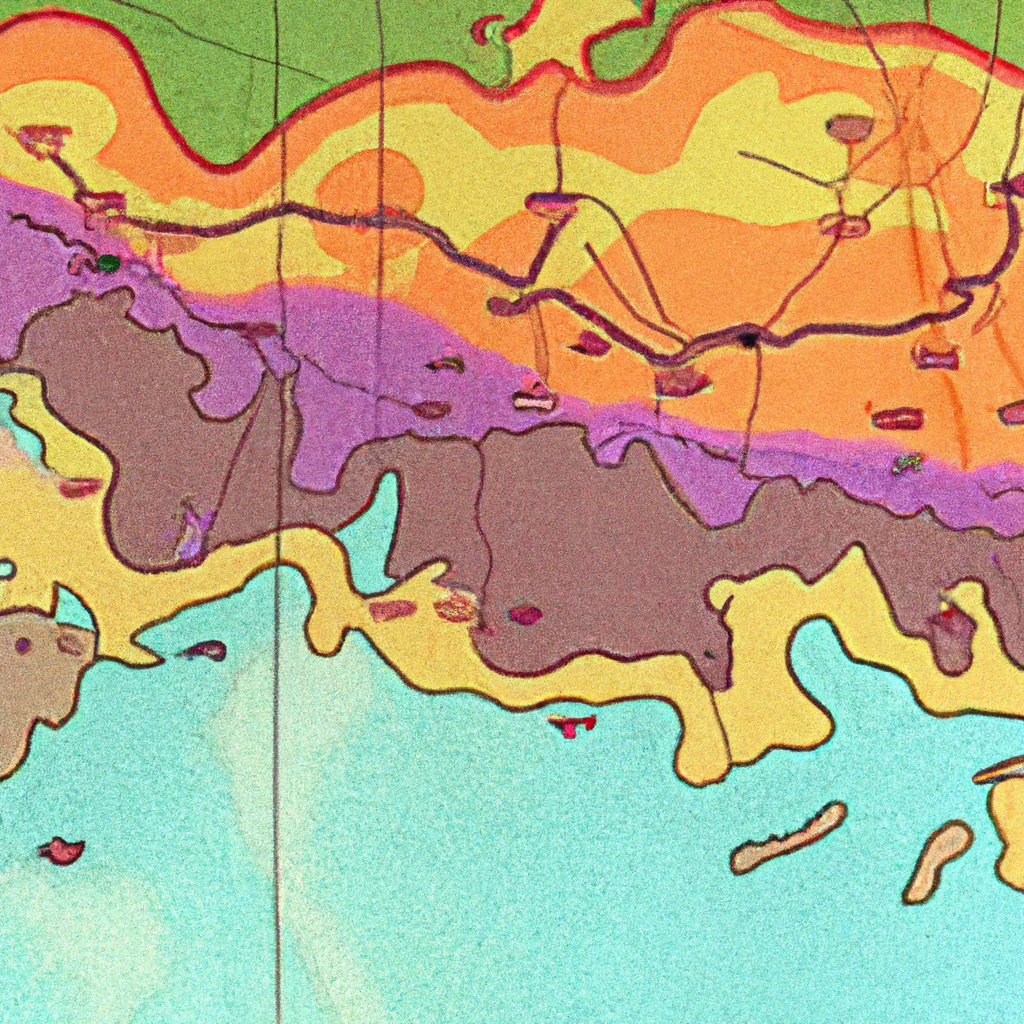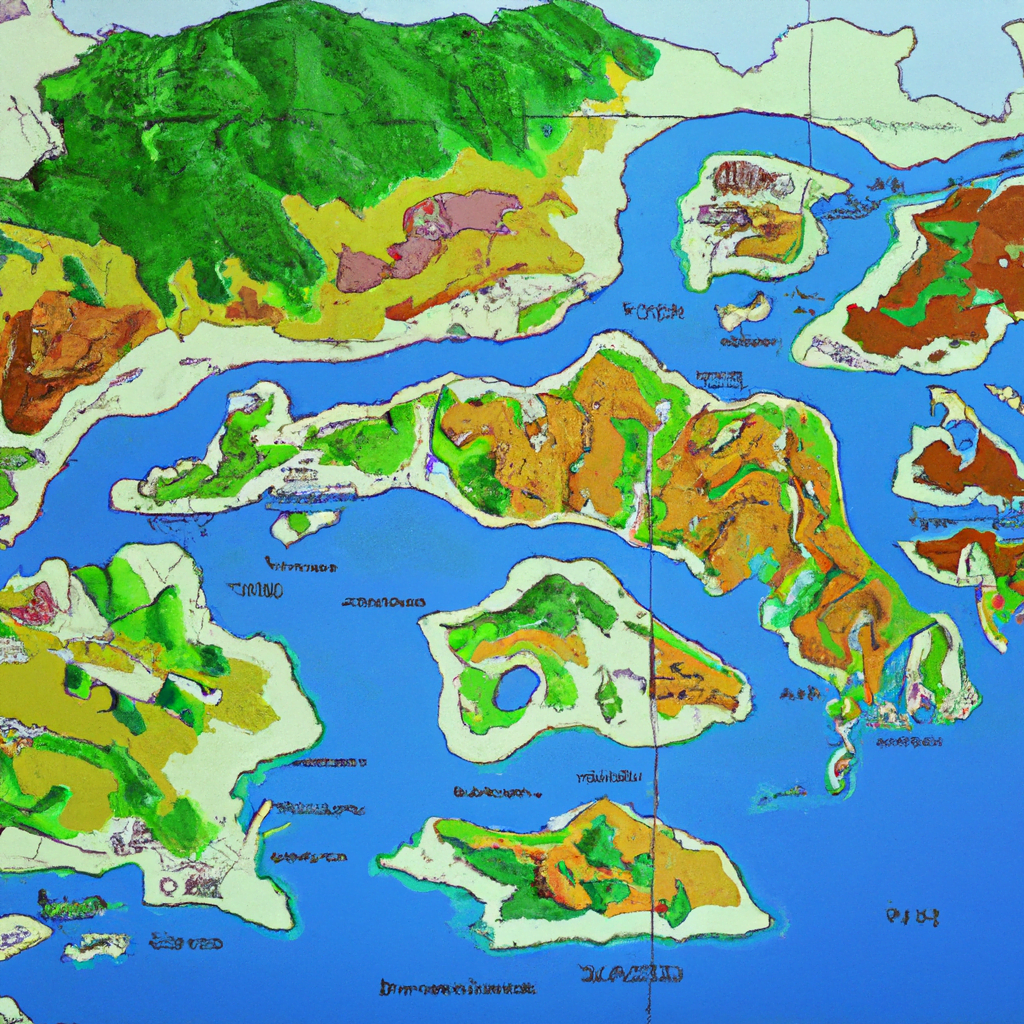
The Art of Illustrating Maps: Navigating the Visual Landscape

Maps have been an essential tool for humans since ancient times. They provide a visual representation of our surroundings, helping us navigate and understand the world around us. While maps primarily serve a functional purpose, they can also be works of art. The art of illustrating maps combines creativity, design, and cartography to create visually stunning and informative representations of our planet. In this article, we will explore the fascinating world of map illustration, its history, techniques, and the impact it has on our perception of the visual landscape.
The History of Map Illustration
Map illustration has a rich history that dates back thousands of years. Ancient civilizations, such as the Egyptians, Greeks, and Romans, created maps to navigate their territories and document their conquests. These early maps were often simple and lacked the artistic elements we associate with modern map illustrations.
During the Middle Ages, map illustration became more elaborate and decorative. Mappa mundi, or world maps, were created to depict the known world at the time. These maps were often highly symbolic and included religious and mythical elements. The Hereford Mappa Mundi, created in the 13th century, is a prime example of a medieval map illustration. It features intricate illustrations of cities, animals, and biblical scenes.
With the advent of the Age of Exploration in the 15th century, map illustration took on a new level of importance. Explorers like Christopher Columbus and Ferdinand Magellan relied on accurate maps to navigate uncharted territories. These maps were not only functional but also served as a means of documenting discoveries and asserting territorial claims.
In the 19th and 20th centuries, map illustration underwent significant changes due to advancements in printing technology. Maps became more accessible to the general public, and illustrators had the opportunity to experiment with different styles and techniques. The rise of tourism also led to the creation of illustrated maps that showcased popular destinations and attractions.
The Techniques of Map Illustration
Map illustration is a multidisciplinary art form that combines elements of cartography, graphic design, and illustration. It requires a deep understanding of geography, composition, and visual storytelling. Here are some of the key techniques used in map illustration:
1. Hand-drawn Illustrations
Hand-drawn illustrations add a personal touch to maps and can evoke a sense of nostalgia. Many illustrators still prefer to create maps by hand, using traditional tools like pens, brushes, and watercolors. Hand-drawn maps allow for more artistic freedom and can capture the unique characteristics of a place.
2. Digital Illustrations
In recent years, digital illustration has become increasingly popular in map making. Digital tools like graphic tablets and software such as Adobe Illustrator offer a wide range of possibilities for creating detailed and precise maps. Digital illustrations can be easily edited, resized, and shared, making them ideal for both print and online use.
3. 3D Modeling
Advancements in technology have enabled illustrators to create three-dimensional maps that provide a more immersive experience. 3D modeling software allows for the creation of realistic terrain, buildings, and landmarks. These maps are particularly useful for urban planning, architectural visualization, and video game design.
4. Infographic Elements
Maps are not just about geography; they can also convey complex information through the use of infographics. Illustrators often incorporate charts, graphs, and icons into their maps to represent data such as population density, transportation networks, or environmental factors. These elements make the maps more informative and visually appealing.
The Impact of Map Illustration
Map illustration goes beyond aesthetics; it has a profound impact on our perception of the visual landscape. Here are some ways in which map illustration influences our understanding of the world:
1. Creating a Sense of Place
Illustrated maps have the power to capture the essence of a place and evoke emotions. They can highlight the unique features and landmarks that define a location, whether it’s the Eiffel Tower in Paris or the Great Barrier Reef in Australia. By emphasizing these elements, map illustrations create a sense of place and help us connect with the world around us.
2. Telling Stories
Maps can tell stories and convey narratives beyond simple geography. They can depict historical events, cultural traditions, or natural phenomena. For example, a map of the Silk Road can illustrate the ancient trade routes and the exchange of goods and ideas between different civilizations. By incorporating storytelling elements, map illustrations engage the viewer and provide a deeper understanding of the subject matter.
3. Promoting Tourism
Illustrated maps play a crucial role in promoting tourism and attracting visitors to a particular destination. These maps often feature iconic landmarks, popular attractions, and local culture. They provide a visual representation of what a place has to offer and entice travelers to explore further. Illustrated maps can be found in travel brochures, guidebooks, and on websites, serving as a visual invitation to discover new places.
4. Simplifying Complex Information
Maps are powerful tools for simplifying complex information and making it more accessible. By using visual elements such as colors, symbols, and labels, map illustrations can convey information in a concise and easy-to-understand manner. For example, a map illustrating the spread of a disease can help researchers identify patterns and make informed decisions.
Conclusion
Map illustration is a captivating blend of art and science. It combines the technical aspects of cartography with the creative elements of illustration to create visually stunning and informative maps. From ancient civilizations to modern digital illustrations, maps have evolved over time, reflecting our changing understanding of the world. Whether hand-drawn or digitally created, map illustrations have the power to transport us to new places, tell stories, and simplify complex information. They are not just tools for navigation but also works of art that enrich our visual landscape.
